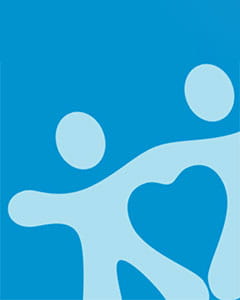What new moms should know about breastfeeding
For first time mothers, learning the “art” of breastfeeding can be difficult. However, like with any other important skill, breastfeeding takes practice. While all Moms and babies are unique, the following tips will help make learning how to breastfeed as easy as possible.
How do I hold my baby for breastfeeding?
You should support your baby, dressed only in a diaper, so that:
- baby’s nose is opposite your nipple
- baby’s body is at the same height as nipple
- baby’s whole body is turned toward you with baby’s head facing your breast
- baby’s head can extend back, allowing the widest possible angle of jaw opening. You can do this by using your hand to support the baby’s upper back and neck, lightly supporting the head so the baby is free to move it as needed.
A small stool for your feet, and a pillow may help with positioning your baby and make you more comfortable. Some moms like to use a special breastfeeding pillow.
Common Positions:
- Cross Cradle: baby is supported using the hand and arm opposite the breast you will be offering. Baby is on his side, chest-to-chest with mother. The base of his head is cradled in the ‘V’ between your thumb and first finger. The heel of mother’s hand supports the baby’s neck and upper back. Mother’s forearm and elbow cradle the baby’s bottom and back. Use a pillow for support.
- Football/clutch: baby is supported using the hand and arm on the same side as the breast you will be offering. Tuck the baby under your arm, along your side. Baby’s bottom and legs may be up against the back of the chair. Mother supports the base of the baby’s head with the ‘V’ between her thumb and first finger.
- Cradle: baby is held in the crook of your arm on the same side as the breast you are offering (best when baby is full term or older).
- Side-Lying position: as you are lying down (supported by pillows if needed), baby is lying next to you facing the breast
Latch
How do I latch my baby on my breast?
 Slowly move the baby’s head side to side so that his nose and lips touch the nipple. Be patient and wait for the baby’s mouth to open WIDE. Quickly move the baby onto the breast so that the tongue and the lower lip seal first to the breast followed by the upper lip. In this position the nipple fills the open upper part of the baby’s mouth. The baby’s mouth will appear off center when compared with the areola and his lower lip should be turned out. You should not feel pain during nursing. A tugging or pulling sensation is good (similar to using the pump) but not pinching. If pain is experienced the infant should be gently removed and allowed to re-latch.
Slowly move the baby’s head side to side so that his nose and lips touch the nipple. Be patient and wait for the baby’s mouth to open WIDE. Quickly move the baby onto the breast so that the tongue and the lower lip seal first to the breast followed by the upper lip. In this position the nipple fills the open upper part of the baby’s mouth. The baby’s mouth will appear off center when compared with the areola and his lower lip should be turned out. You should not feel pain during nursing. A tugging or pulling sensation is good (similar to using the pump) but not pinching. If pain is experienced the infant should be gently removed and allowed to re-latch.
Remember: bring your baby to your breast, not your breast to your baby.
How do I break a latch?
Never pull your baby off your breast while he is latched. This can cause nipple damage. Instead gently insert one of your fingers into the corner of your baby’s mouth to break suction. If needed, you can repeat the above steps to have your baby relatch correctly.
How do I know my baby is latched on correctly?
Baby’s lips should be flanged (flared out, not tucked under) and opened in a wide angle.
Baby’s chin should be deep in your breast and nose just barely above it.
You should not see any of your nipple at the corner of baby’s mouth. All of the nipple and part of the areola (the dark part of your breast around the nipple) should be in baby’s mouth.
If your breasts are engorged or very full, your baby may have trouble getting a good latch. In this case, you should either pump or hand express a little milk to soften your breast before attempting to latch the baby.
Signs of a poor latch:
Mother
- Pain with breastfeeding
- Nipple pinched or has white stripe after baby comes off breast
- Cracked, bleeding, sore nipples from breastfeeding
- Breast still full after breastfeeding
Baby
- Crying, fussy after breastfeeding
- Continues to show hunger cues after breastfeeding for long period
- Many dry diapers or fewer than 5 wet diapers in a day
- Poor weight gain or loss of weight
- Baby is too sleepy or weak to breastfeed (After discharge this may also be a sign of illness)
Despite the tips above, learning to breastfeed can still be a difficult time in a mom’s life. You are still healing from birth, often sleep deprived and adjusting to a new routine. It can be difficult to stay motivated, even knowing that breastfeeding will be best your baby. Do not be afraid to reach out for support.
Winnie Palmer Hospital for Women & Babies offers the following services for new moms:
Breastfeeding Education and Support – private instruction, lactation consultants, new mother education classes, breast pump rental and more
Online Community Groups - This group is a place for moms to discuss breastfeeding and obtain support from one another







